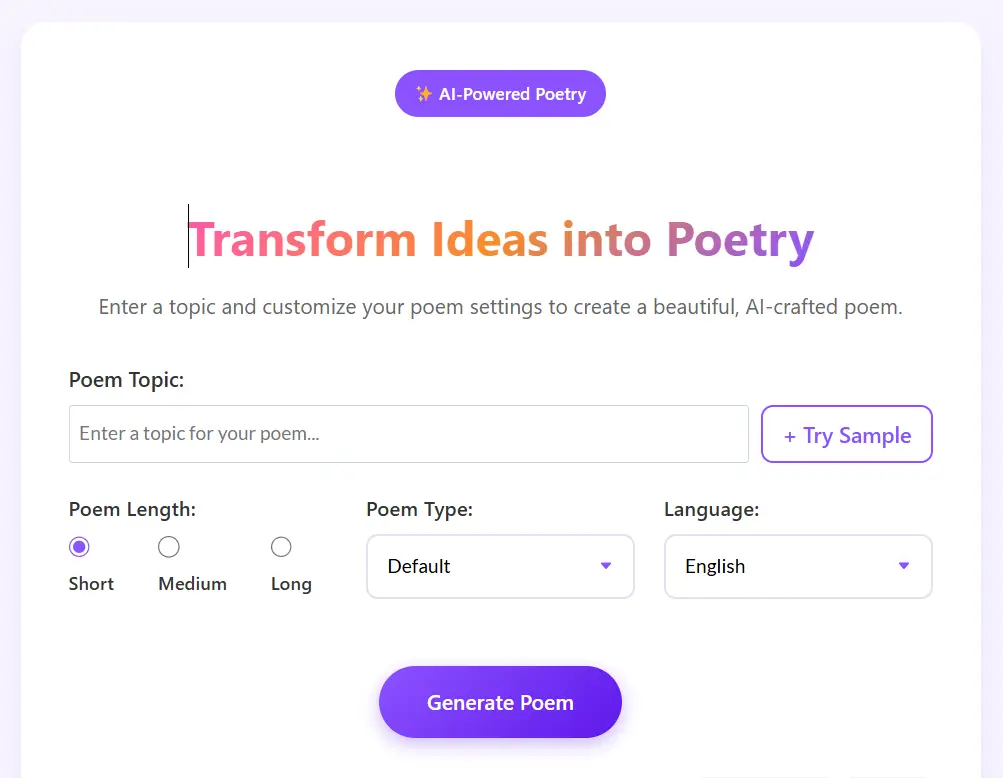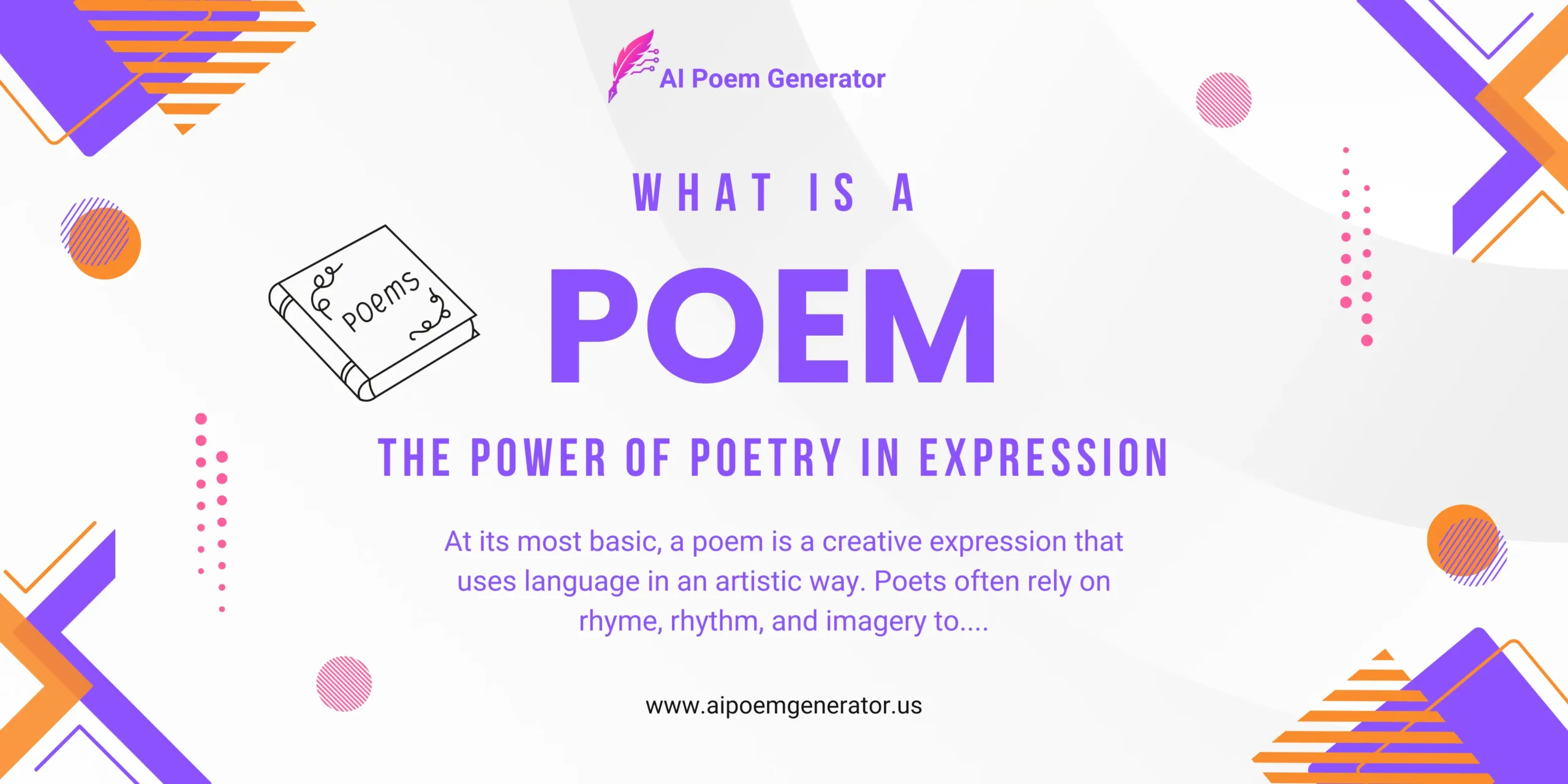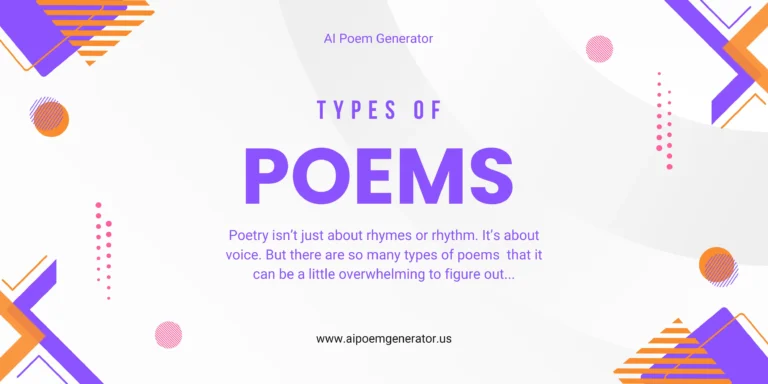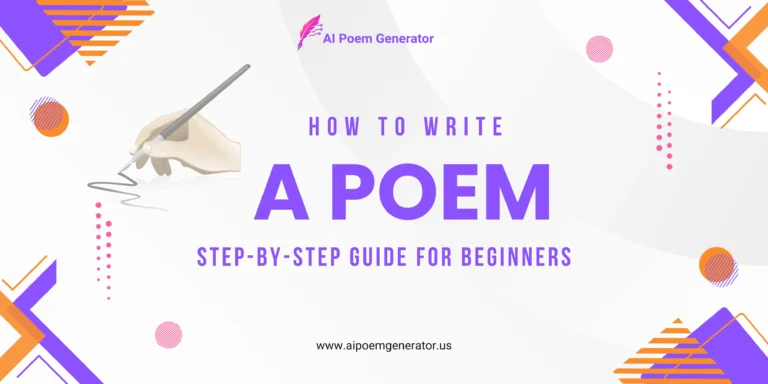What is a Poem? The Power of Poetry in Expression
A poem isn’t just a string of beautiful words; it’s a unique form of expression that carries depth, emotion, and meaning. For many, poetry feels like a special language, one that connects people to ideas and emotions in ways that regular conversation can’t.
But what exactly is a poem, and why does it hold such a powerful place in human culture?
Let’s break it down simply, while respecting the rich history and creativity that lies behind every line of poetry.
The Essence of a Poem
At its most basic, a poem is a creative expression that uses language in an artistic way. Poets often rely on rhyme, rhythm, and imagery to convey emotions and ideas.
Unlike prose, which follows standard grammar and sentence structures, poetry plays with language to create an effect that’s both aesthetically pleasing and thought-provoking.
In poetry, every word is chosen carefully. The beauty of a poem lies in its ability to convey deep emotions or profound insights in a condensed space.
For instance, Robert Frost well-known “Stopping by Woods on a Snowy Evening” packs an emotional punch in just a few lines, using simple imagery to convey feelings of solitude, responsibility, and quiet contemplation.
Example Poem: Stopping by Woods on a Snowy Evening
“The woods are lovely, dark and deep,
But I have promises to keep,
And miles to go before I sleep,
And miles to go before I sleep.”
This poem shows how even a few lines can create a deep emotional impact. Frost uses imagery and repetition to echo the theme of duty and the passage of time.
The Difference Between Prose and Poetry
While both prose and poetry are written forms of communication, they differ in style and structure. Prose follows typical grammatical rules and is written in complete sentences and paragraphs.
Poetry, on the other hand, is more flexible. It may use line breaks, stanzas, and unconventional punctuation to create flow, rhythm, and emphasis.
The difference is like comparing a painting to a photograph. A photograph (prose) captures reality exactly as it is. A painting (poetry), however, distills reality into something deeper, abstract, or emotional.
The Power of Words
What makes a poem stand out is its ability to pack a punch with fewer words. Poems often rely on symbolic meaning, figurative language, and emotional depth. Take Robert Frost’s famous “Stopping by Woods on a Snowy Evening.”
Through simple yet impactful words, Frost draws a picture of a peaceful winter night, while also hinting at deeper themes of life, responsibility, and solitude.
If you’re looking for inspiration or help crafting your own verses, you can try the AI Poem Generator.

Key Elements of Poetry
1. Rhyme and Rhythm
Poetry often has a rhythm that makes it musical. Think of it like the heartbeat of the poem. Rhyming words are sometimes used to enhance this rhythm, though not all poems need rhyme. Free verse poems, for example, don’t follow a set rhyme scheme, but still maintain rhythm through pacing and line breaks.
2. Imagery
A good poem paints pictures in the mind. By using vivid descriptions, poets can make the reader see, feel, and experience what they’re writing about. It’s through imagery that poetry becomes a more sensory and emotional experience.
3. Figurative Language
Similes, metaphors, and personification are common in poetry. These poetic devices help convey abstract ideas in ways that feel more tangible. For instance, “the sky wept” uses personification to suggest that rain is like tears, giving the weather an emotional quality.
4. Concise Language
Unlike prose, poetry tends to be more compact. Each word is carefully chosen for its meaning and impact. It’s not about filling up space, but about making every word count.
5. Theme and Symbolism
Poems often have underlying meanings or themes. They may talk about love, loss, nature, or human experience, but what gives poetry its depth is the way it often works with symbolism. Objects, sounds, or events in poems often stand for something greater, allowing the reader to find multiple layers of meaning.
Also Read: How to Generate Poems Without Using ChatGPT?
Types of Poems
Poetry comes in many different forms, each with its own set of rules and structures. Understanding the different types of poems will give you a better appreciation of this literary art.
1. Sonnet
- A sonnet is a 14-line poem that typically follows a specific rhyme scheme. There are two main types: the Shakespearean Sonnet and the Petrarchan Sonnet. Shakespearean sonnets are written in iambic pentameter and have a rhyme scheme of ABABCDCDEFEFGG. Petrarchan sonnets, on the other hand, consist of an octave (eight lines) and a sestet (six lines).
Example of a Shakespearean Sonnet:
“An Eerie Feeling”
The air hangs still, a heavy, breathless shroud,
No rustle stirs the leaves upon the tree.
The sun is veiled, a pale and sickly cloud,
And silence reigns, unnervingly.
A prickling sense upon the skin takes hold,
A whisper brushes past, unheard, unseen.
The story whispers, yet remains untold,
Of something ancient, lurking in between.
A vacant gaze from windows, dark and deep,
A shadowed figure at the garden gate,
My heart begins a frantic, hurried leap,
As dread constricts, and seals my destined fate.
The eerie feeling claws, a chilling blight,
And steals the day and swallows up the light.
This poem follows the Shakespearean Sonnet structure, using vivid imagery to evoke feelings of fear and suspense.
2. Haiku
- Haiku is a traditional Japanese form of poetry that focuses on nature. It consists of three lines with a 5-7-5 syllable structure. Haikus often capture a fleeting moment, evoking a sense of simplicity and beauty.
Example Haiku:
Dark clouds weep softly,
Streetlights blur in silver rain,
World sighs, hushed and still.
In this haiku, the poet captures the quiet beauty of a rainy night, using simple yet evocative language.
3. Free Verse
- Free verse poetry doesn’t adhere to a specific rhyme scheme or structure. This style allows the poet more freedom to express their thoughts without the constraints of traditional forms.
Example of Free Verse:
“Working Long Hours”
The clock face blurs, a hazy moon.
Another email screams for attention,
A siren song in the digital sea.Coffee, cold now, a bitter promise
Of sustained alertness, a lie repeated
Too many times tonight.
Here, the poet focuses on expressing feelings of exhaustion and frustration without worrying about rhyme or meter.
4. Limerick
- Limericks are light-hearted, often humorous poems with a distinct AABBA rhyme scheme. They are usually short, fun, and full of playful language.
Example Limerick:
My phone, oh where could it be?
Was it under the couch, next to me?
A frantic search round,
No helpful sound,
Then found in my back pocket, glee!
Limericks are designed to entertain, offering a quick, cheerful read.
Poetic Devices That Bring Poems to Life
Poets use a range of devices to create rhythm, meaning, and emotion. These devices make poems more memorable and impactful. Here are a few examples:
- Alliteration: Repeating consonant sounds at the beginning of words (e.g., “Peter Piper picked a peck of pickled peppers”).
- Onomatopoeia: Words that mimic sounds (e.g., “buzz,” “crash”).
- Enjambment: A line of poetry that runs into the next line without a pause (e.g., “I wandered lonely as a cloud / That floats on high o’er vales and hills”).
Why Poems Matter
Poetry may feel abstract, but its value is undeniable. It helps people express their deepest emotions, question the world around them, and connect with others on a profound level.
Poems can be therapeutic, educational, and even entertaining. Through the years, poetry has preserved moments in history and captured the essence of human experience.
Online Tools: AI Poem Generators
With the rise of technology, poetry is no longer restricted to just human creativity. AI tools, like the AI Poem Generator, have emerged to help users create poems with ease.
These tools use algorithms and machine learning to understand poetic structures and generate poems in various styles. While they may not replace the unique human touch, AI-based poetry writing tools offer a fun and accessible way for anyone to try their hand at crafting a poem.
Final Thoughts
What is a poem? It’s a bridge from the heart to the page, a way to express the thoughts and feelings that are hard to articulate. It’s a space where words go beyond their dictionary definitions and start to play a role in our lives and our emotions.
Whether you’re reading a Shakespearean sonnet or writing a simple haiku, poetry offers a way to connect with the world in a more personal and meaningful manner. It’s a celebration of language and thought, and perhaps that’s why poetry has stood the test of time.
FAQs
What is the purpose of a poem?
Poems are used to express emotions, ideas, and stories in a condensed, impactful way. They help connect with the reader on a deeper level, using rhythm, imagery, and symbolism.
Do all poems rhyme?
No, not all poems rhyme. While traditional forms like sonnets often do, modern poetry can be written in free verse, which doesn’t follow a rhyme scheme.
What are some famous types of poems?
Some famous types of poems include the sonnet, haiku, free verse, limerick, and lyrical poems.
Can AI create poetry?
Yes, AI can generate poetry. AI Poem Generators use algorithms to create poems in various styles, though they are often less emotional or personal than human-written poems.
How can poetry benefit my writing?
Reading and writing poetry can help improve your language skills, expand your vocabulary, and teach you how to convey emotions and ideas succinctly.
What is the difference between prose and poetry?
Prose is written in standard sentence and paragraph form, following grammatical rules, while poetry uses line breaks, stanzas, and often a more flexible use of language for rhythm, imagery, and emotional depth.




One Comment